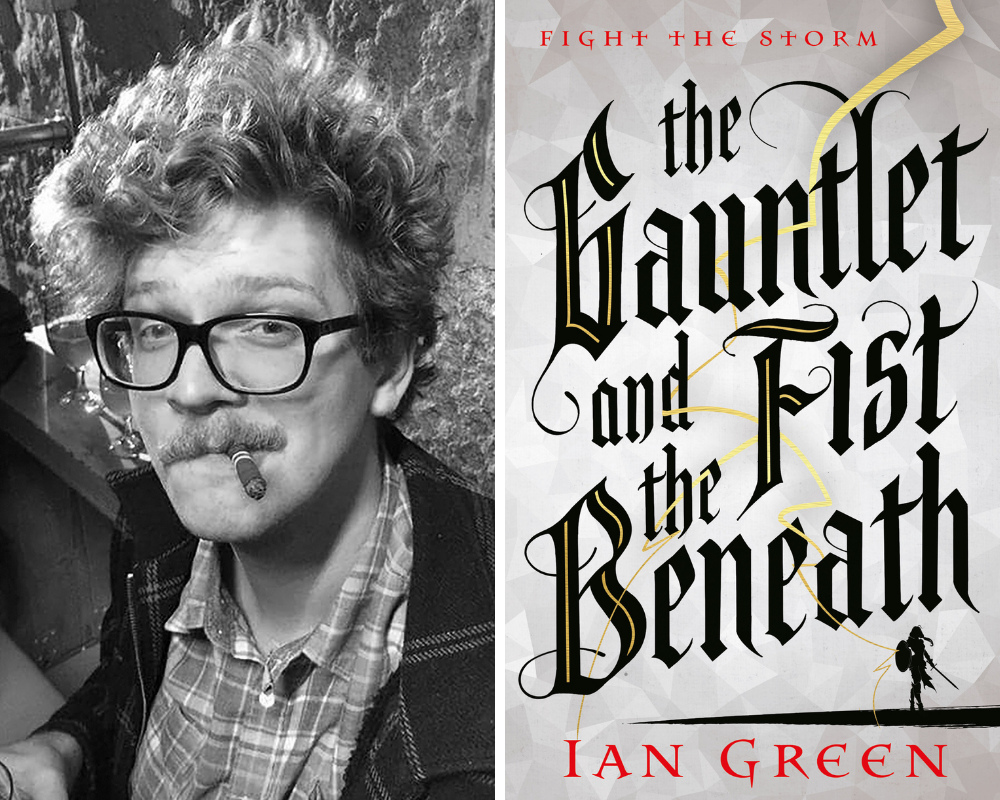Ian Green on worldbuilding in fantasy and the journey to publication

When I was wee I used to spend hours clambering the ruins of castles and wandering the forests and bogs of north east Scotland. That was a beginning for me both in terms of my approach to worldbuilding, and also the long path to publication of my first novel, the epic fantasy The Gauntlet and the Fist Beneath.
I love the myth and landscapes of Scotland, and the layers of history underlying it all, and I grew up reading endless epic fantasy books whilst surrounded by the Scottish countryside. I spent a decade writing short fiction trying out different forms and voices, but when I started to incorporate the fantastical elements I love with elements of the landscapes I grew up in suddenly a fire was lit. I’d always been a little afraid of writing fantasy simply because I love the genre so much and that made the idea of failure all that more worrying.
The path to publication included stories in anthologies and in the lovely community of indie literary magazines, as well as a variety of live events that taught me a lot about how the spoken word can influence the written. I won a few prizes, and was lucky enough to have some of my work broadcast on BBC Radio 4. With all of that behind me, when I started writing The Gauntlet and the Fist Beneath I felt sure of my voice, which let me focus on the story and the characters.
The worldbuilding process was something I approached with a feverish joy. I love thinking from the broadest terms, like global geography and economics, right down to the intricacies of social conventions and cultural traditions. World-building is a fundamental element of fantasy writing craft, and a wonderful chance to try new things. The key element I have found to making a setting that a reader can escape to is consistency and depth. Not only must any system or element you introduce work consistently across the world, it must also interact with elements beyond the surface level. As well as that, thinking about the depth of history is important. Except for the first, all civilisation is built on ruin or expansion. Thinking about the history of your world and how it plays into the present helps make it feel real and lived-in, rather than a film set that looks great but has no structural integrity below it.
When writing this book I spent a long time scribbling in notebooks, drawing maps and making intricate spreadsheets of characters and locations and miscellaneous information. By immersing myself so deeply in the worldbuilding, when I started writing the story I could focus on plot and character – the setting was all there, every town and forest and army and idea. By weaving through a history whose impact is felt even in the present, you can create a world that the reader can believe in, no matter how fantastical it may be.
For The Gauntlet and the Fist Beneath I took inspiration from the rugged landscapes of Scotland, the brutal and intricate history of our world, and the spirituality and magic of ancient celtic animism. Wherever you take your inspiration from, consistent application of your ideas beyond the surface level and providing a historic foundation for your new world can help make it shine.
The Gauntlet and the Fist Beneath is published by Head of Zeus on 5 August 2021


